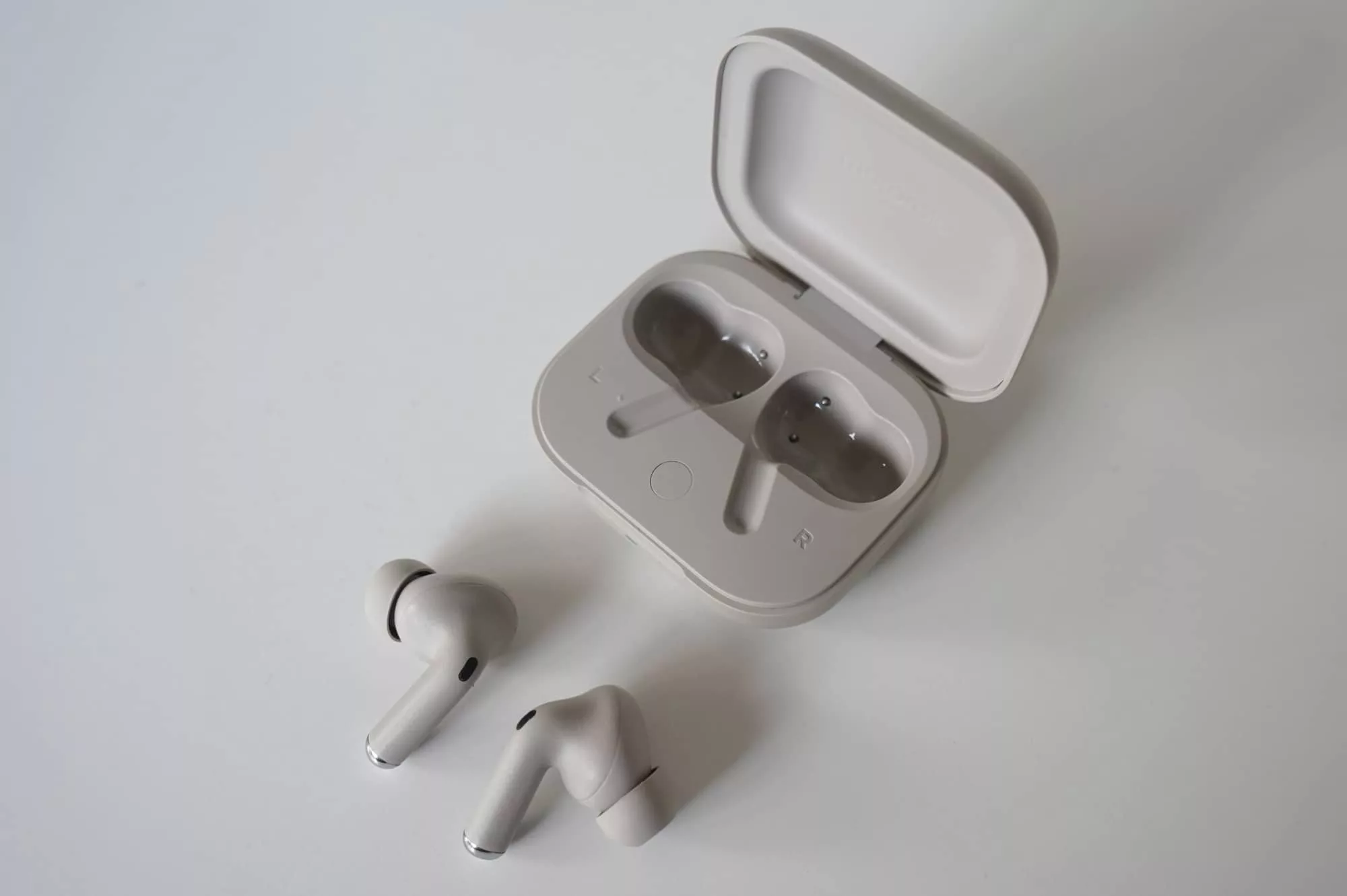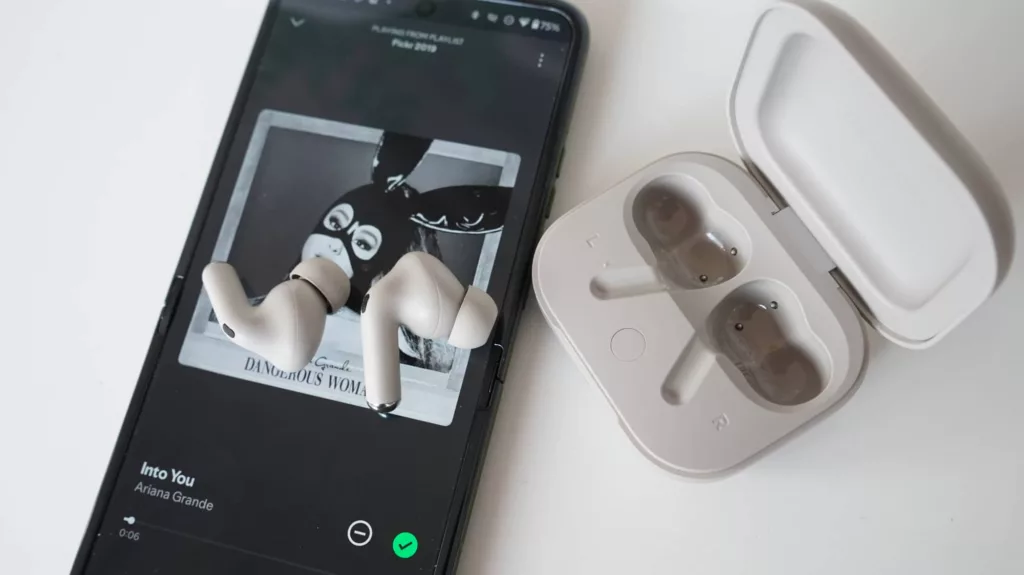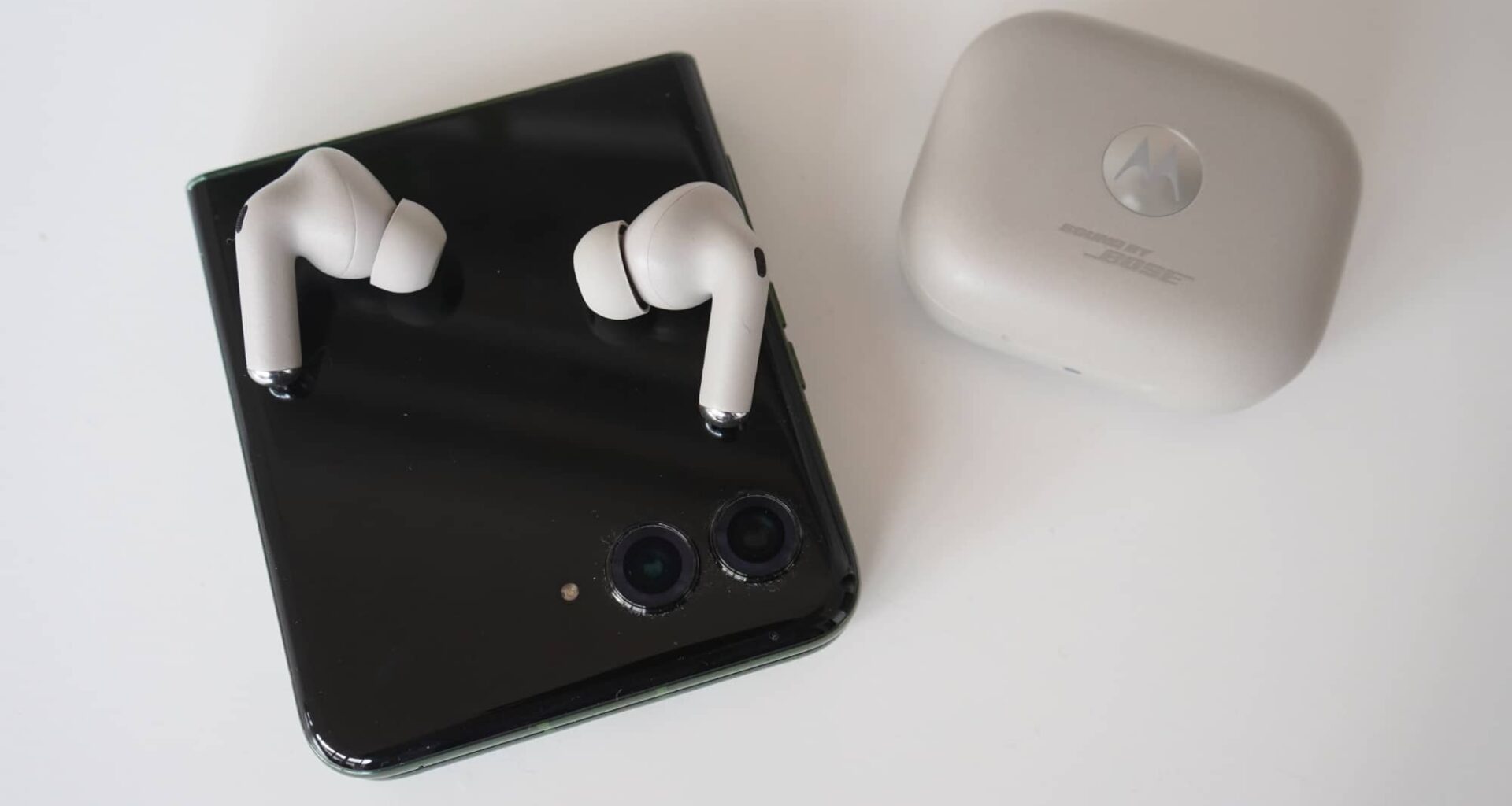Quick review
The good
The not-so-good
At a shade under $250, the Moto Buds+ are an intriguing proposition, as Motorola finds a way to make a case for less expensive earbuds armed with Bose’s expertise on-board.
There’s clearly no shortage of earphone choices out there, but there’s typically a difference between the low-end and models on the opposite end of the spectrum in the high-end. Models in the first tend to be inexpensive and often lack features, while those in the latter clearly include plenty of tech, but you have to pay for them.
And then there’s everything in between. Much like how mid-range phones are marrying features and value, so too are mid-range earphone and earbud offerings.
This year, a player with strong ties to the mid-range phone world is even trying mid-range earphones in one of the more intriguing ways.
Motorola is no stranger to mid-range phones — we review several per year — and is now trying its hand at earbuds, all the while turning to another leader in the audio space for a bit of a helping hand. That’s the crux of what makes the Moto Buds+ (or Moto Buds Plus, depending on how you write it) so compelling: they’re Motorola earbuds with tuning by Bose.
For a shade under $250, are the Moto Buds+ one of the best earbuds offerings around?

Design and features
Designed almost as a slightly more angular version of the AirPods, Motorola won’t exactly win kudos for the look as you glance your eyes over another pair of stemmed earbuds.
That said, there are only so many ways for earphones to seemingly be designed, and the Moto Buds+ aren’t unattractive. The model we had in for review was easy on the eyes: a pair of earbuds with tips, and a stem that came down at an angle, complete with a small touch panel inside able to pick up on taps in close succession.
Inside, there are two drivers per ear, with Motorola pretty descriptive on the specs: an 11mm woofer and a 6mm tweeter. That’s more than the typical one driver we’re used to seeing in earphones, but more drivers doesn’t necessarily guarantee higher quality audio. Motorola has also paired it with a triple microphone system and a wireless charging case.
Bose is also featured on the case, and that’s because Bose is doing the heavy lifting in active noise cancellation and sound tuning. In short, Bose is bringing its expertise to tweak the sound, so it’s not just a pair of Motorola earphones.

In-use
More or less geared for the Android market, however, the Buds+ are also a curious play simply because they prefer Android over iOS.
You can pair these noise cancelling earbuds with an iPhone, sure, but you just won’t get any support whatsoever. Much like how the AirPods Pro don’t have an app on an Android phone, the Moto Buds lack an app for the iPhone, and both need their apps. There’s just no way around that.
Controlling the features and changing things requires an app, so while you can technically listen to music and podcasts on the Moto Buds+ using an iPhone, the lack of an app means you can’t control them, making this primarily Android earphones. That’s one more sigh for the lack of platform agnosticism in our industry.
Android users are really what these earbuds are made for, and Motorola buyers specifically. It does say “Motorola” on the box, after all.
Using them consists of playing around with that app or fiddling with the controls, but we found the app beat the controls any day of the week. Double tap either side to pause and play, triple tap to go back or skip a track, and if you like, go into the app to make the changes. Sometimes the touch controls don’t even work properly, so maybe just do that.

Performance
Tested with the Pickr Sound Test (which you can hear for yourself), we jump into electronic from Tycho and Daft Punk, where the sound is nice and relatively well rounded, though the bass felt a touch subdued, but still delivered. The soundstage was nice, though, and that set up the general vibe for these earphones, keeping things going.
For instance, in the punchy pop of Carly Rae Jepsen, you’re treated to a slight reduction on clarity in exchange for mostly acceptable balance across the whole: decent highs and mids, with just that little bit less bass. It’s still there, you can still hear it, but you may not feel it the way you can with warmer offerings.
Despite the slightly reduced bass, the sound is fairly well rounded. We’d argue it’s enough bass for most, with the mids and highs taking point, and it’s a delivery that works well in pretty much every genre.
In rock, the snap of guitars from Rage Against the Machine and the intentionally hollow drums of the Deftones were as impactful as ever, as was the lovely sound from the likes of Bowie, Paul Simon, and The Beatles. Even jazz and classical shone here.

Noise cancellation
An obvious part of the package, the noise cancellation on the Buds+ is handled by Bose, and it shows. We’re reminded of one of the earlier Quiet Comfort models, which is to say it works well enough and can cancel the world out nicely.
It’s not quite on the Bose-level of doing things, but we suspect part of that may come from the fit: by going for a simple tip on stemmed earbuds, we never found quite the same seal Bose offers in its own noise cancelling earbuds.
These are definitely better than we expected, though, and you can seal yourself in a reasonably decent bubble of silence and sound if need be.

Spatial audio
Spatial audio is technically included in these earphones, complete with head-tracking, though you need a specific phone in order to make that happen.
The caveat on Moto’s website says:
“Dolby Atmos® and Dolby Head Tracking™ require a compatible Motorola smartphone, and compatible content.”
We tested it with the Moto Edge 50 Pro, and that didn’t seem to include the technology needed to make it happen, and neither did the Moto Razr 50 Ultra we reviewed. Spatial was supported — you get a wider soundscape, for sure — but not the head-tracking element, at least not for standard sound, like it does on the Bose QC Ultra Earbuds.
You might need to stretch out to spatial audio on Amazon Music or Tidal to hear a tracked sound with the Moto Buds+; it sure didn’t work the way Bose’s other spatial earphones work.
Movies may be a different thing altogether: there’s plenty of Dolby Atmos content for movie soundtracks, provided your subscription to a service includes it, and so this may be where spatial works. We couldn’t make it work with Disney+ on an Android phone, but you may have better luck. It’s worth keeping in mind that until Apple launched spatial on Apple Music, the same concept was just limited to movies on iPhones, too.

Battery
We’re not sure spatial will matter for everyone, but the battery life is a positive all the same.
Up to eight hours are possible for the Buds+ with a total of 38 hours in the tiny charge box. That should be enough for a week of listening, and thanks to the support of Type C USB and Qi wireless charging the Buds+ are easily recharged.
As it is, there are some wireless earphone cases that lack wireless charging for the case, so Moto is actually slightly ahead on this one.
Value
The price is also solid, too, with an Australian recommended retail price of $249 making the Bose-tuned Moto Buds+ one of the less expensive noise cancelling options with well-known brands on the box: Motorola and Bose.
That’s better value than we’ve seen from Bose prior, though these aren’t technically Bose buds. You won’t care, though: you’re saving money to get something similar.
So similar, we’re actually reminded of Bose’s first-gen QC noise cancelling buds from a few years ago. It almost feels like Motorola’s been given access to some of that sound technology in a more cost-effective package, and that’s not a bad thing. These are great value given the brands involved.

What needs work?
But in what feels like a bit of a first-gen problem, bugs are a bit of a thing.
Testing the Moto Buds+ on several phones, we found the in-ear detection would sometimes work, and then sometimes not. Motorola devices were seemingly the most compatible, but in-ear wouldn’t play nicely on at least one Google device, and we’re not sure why. When in-ear doesn’t work, your ability to control the noise cancellation levels go out the window, even if you can still play audio through the earbuds. Weird.
The design is a touch on the basic side for us, and the controls aren’t always the easiest to trigger. Do we tap? Do we squeeze? You actually double and triple tap at the shoulder of the stem — the angle — but it could be a better design to really get the message across. It could also work consistently.
We’d love some firmer logic for the spatial audio support, and the app a lot better, too. So many times, the app reported the earbuds were working, but they at the earbuds weren’t inserted when they were. Some more obvious water resistance wouldn’t go astray, either. Lots of little tweaks could make all the difference for the Moto Buds+.
Moto Buds+ vs the competition

While there are niggles, the Moto Buds+ will win fans solely for their value: at $249 in Australia, they’re basically pair of Bose buds for less. Plain and simple. And depending on the phone you buy, you might even get them with that phone, as Motorola could end up bundling these Buds in.
Now they’re not exactly the same as the Bose QC Ultra, easily one of this reviewer’s favourite pairs of in-ears, but they’re also better than Moto’s prior truly wireless options, likely because Motorola is working with a leader in sound for this release.
Collaborations are great, and Motorola is reaping the benefits.
That said, the price is such that you might also consider something for less, or even spending a little more.
There are less expensive noise cancelling options, such as the excellent Soundcore Liberty 4 NC which manage to hit under $200 for similar features, but without the Bose-tuning and spatial audio. Slightly more expensive but still under $200, the Sony LinkBuds S grab attention by being similar to the WF-1000XM3 in a more modern and refreshed design. Again, no spatial audio if that matters to you.
On the flip side, you can also choose to spend more than the $250 the Moto Buds+ cost, and you’ll find plenty of better options. The $449 Bose QuietComfort Ultra Buds are one of this reviewer’s favourites, and a guaranteed listen every time he switches over to review an Android phone, while the Sony WF-1000XM5 is a clear choice for $399 and easily one of the better benchmarks.
At just over the $250 mark, the $299 Beats Fit Pro are a great option with AirPods Pro-like features (at least from the first generation), as are the Bose QC Buds 2, which are a little older than the Moto Buds+ and offer similar features, but with better noise cancellation and a solid app. Meanwhile, there’s also Sennheiser’s Accentum True Wireless at $350.
You have plenty of options at this price point, but it’s very much a question of whether you want to spend less, more, or if Goldilocks is on the money with something being just right.

Final thoughts (TLDR)
For the price, Motorola will definitely have fans. The sound is decent, and the value ain’t bad, either.
There’s definitely a solid effort in the Bose Moto Buds Plus, as the company strives to let you get your money’s worth a little bit more obviously. Motorola needs to apply a few tweaks here and there to make the experience better, but these Buds ain’t bad, and that’s good.







